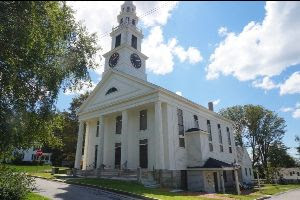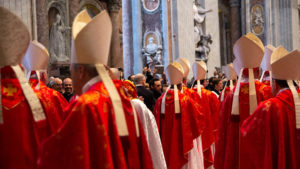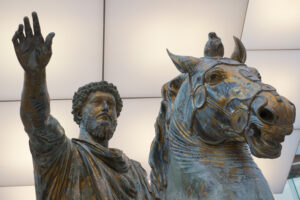Abide with me: fast falls the eventide;
the darkness deepens; Lord, with me abide.
When other helpers fail, and comforts flee,
Help of the helpless, O abide with me.
Swift to its close ebbs out life’s little day;
Earth’s joys grow dim, its glories pass away.
Change and decay in all around I see.
O Thou who changest not, abide with me.
I need Thy presence every passing hour.
What but Thy grace can foil the tempter’s power?
Who like Thyself my guide and strength can be?
Through cloud and sunshine, O abide with me!
– Henry Francis Lyte (1793-1847), from “Abide with Me” (1847)
 We devoted our last week’s post to a very brief tour of what is actually going on in what conventional materialist scientists tell us is only “dark matter”, and therefore not worth mentioning. But in fact, that “dark matter” is the greater reality, the true reality where we spend our eternal lives. And it is full of more love, light and joy than any of us can imagine! So perhaps we ought to follow that post with specific and useful directions, in order to make sure that everyone knows how to carry out the little journey from here to there.
We devoted our last week’s post to a very brief tour of what is actually going on in what conventional materialist scientists tell us is only “dark matter”, and therefore not worth mentioning. But in fact, that “dark matter” is the greater reality, the true reality where we spend our eternal lives. And it is full of more love, light and joy than any of us can imagine! So perhaps we ought to follow that post with specific and useful directions, in order to make sure that everyone knows how to carry out the little journey from here to there.
 After all, what we on earth call “the death rate” turns out to be 100%. Or, to put it in another and more colorful, if actually an erroneous way, “No one gets out of here alive”, as the wags are fond of telling us. (They are wrong, of course. It turns out that everyone gets out of here alive.) But we have only lately learned from one of our most popular Seek Reality Podcast guests, Mikey Morgan, who communicates with us from the high sixth level of the afterlife, that close to a quarter of the people who leave their bodies on earth now to transition back home will sadly go off-track for a time, and will not immediately make it to the next level of reality. Alarmingly, my Thomas tells us that statistic is, alas, about right. And while there can be a number of reasons for this delay to happen, one of the main reasons for temporarily uncompleted transitions is just plain ignorance! An easy death after what has been a long and productive lifetime, followed by a quick and trouble-free transition home sadly cannot be guaranteed. Our frame-verse was written by someone who transitioned in just his early fifties, so becoming familiar with how lo make our deaths easy and trouble-free should be a priority for everyone, at every age!
After all, what we on earth call “the death rate” turns out to be 100%. Or, to put it in another and more colorful, if actually an erroneous way, “No one gets out of here alive”, as the wags are fond of telling us. (They are wrong, of course. It turns out that everyone gets out of here alive.) But we have only lately learned from one of our most popular Seek Reality Podcast guests, Mikey Morgan, who communicates with us from the high sixth level of the afterlife, that close to a quarter of the people who leave their bodies on earth now to transition back home will sadly go off-track for a time, and will not immediately make it to the next level of reality. Alarmingly, my Thomas tells us that statistic is, alas, about right. And while there can be a number of reasons for this delay to happen, one of the main reasons for temporarily uncompleted transitions is just plain ignorance! An easy death after what has been a long and productive lifetime, followed by a quick and trouble-free transition home sadly cannot be guaranteed. Our frame-verse was written by someone who transitioned in just his early fifties, so becoming familiar with how lo make our deaths easy and trouble-free should be a priority for everyone, at every age!
 Before we delve further into learning what you are going to be delighted to discover is an easy and happy going-home process, there are two basic fields about which you will need to be more knowledgeable. I will try to make these brief summaries as easy to understand as possible, and I apologize for the fact that what are essential truths are not already common knowledge! They ought to be. And one day they will be. But for more than a century, materialist mainstream scientific gatekeepers have been fighting for no rational reason to keep you ignorant. I have, of course, written about both of these afterlife pillars here, but not nearly often enough. And when you transition home, you will need to be very familiar with this information. So, here yet again are quick tours of both Consciousness and our Greater Reality.
Before we delve further into learning what you are going to be delighted to discover is an easy and happy going-home process, there are two basic fields about which you will need to be more knowledgeable. I will try to make these brief summaries as easy to understand as possible, and I apologize for the fact that what are essential truths are not already common knowledge! They ought to be. And one day they will be. But for more than a century, materialist mainstream scientific gatekeepers have been fighting for no rational reason to keep you ignorant. I have, of course, written about both of these afterlife pillars here, but not nearly often enough. And when you transition home, you will need to be very familiar with this information. So, here yet again are quick tours of both Consciousness and our Greater Reality.
 FIRST, Consciousness is All That Exists. As pioneering quantum physicist Max Planck said in 1931, “I regard consciousness as fundamental. I regard matter as derivative from consciousness. We cannot get behind consciousness! Everything that we talk about, everything that we regard as existing, postulates consciousness.” He later elaborated on this statement, but the principle always has remained: what we experience as consciousness is fundamental. Indeed, there is nothing else. It was much harder for our greatest materialist physicist, Albert Einstein, ever to get there, at least publicly; but late in his life he did say, “Concerning matter, we have been all wrong. What we have called matter is energy, whose vibration has been so lowered as to be perceptible to the senses. There is no matter.” Although he renounced what was a related quotation. With his eye on his battered legacy, very late in his life, Dr. Einstein said, “I never said that ‘Reality is merely an illusion, albeit a very persistent one.’ It is fake news. Instead, one could say that ‘The perception of reality not being real is an illusion, albeit a persistent one.’ Reality is as real as it gets in this life time. Go out in nature and you will find that reality is the ultimate manifestation of Love. Reality is you and all of nature’s kind. It is very real. It is true Love. Because all of nature is a manifestation of Love. And that includes You.” The poor guy! Just look at how carefully he had to word that. He hated watching quantum mechanics gradually claim its share of physics, when he was too old to do anything about it. We know now that the only thing that objectively exists in all of reality is what you and I experience as human consciousness. Consciousness can be defined as “An energy-like potentiality without size or form, alive in the sense that your mind is alive, infinitely powerful and highly emotional, and therefore also probably self-aware.” Consciousness at its highest vibration is God, and it is perfect love; while ranged along its lower vibrations are all lesser minds, including yours and mine. At its lowest vibration, consciousness is fear, anger, hatred, and all the other ishy emotions, as well as the ishiest minds. There truly exists nothing else whatsoever but infinitely and eternally creative Mind.
FIRST, Consciousness is All That Exists. As pioneering quantum physicist Max Planck said in 1931, “I regard consciousness as fundamental. I regard matter as derivative from consciousness. We cannot get behind consciousness! Everything that we talk about, everything that we regard as existing, postulates consciousness.” He later elaborated on this statement, but the principle always has remained: what we experience as consciousness is fundamental. Indeed, there is nothing else. It was much harder for our greatest materialist physicist, Albert Einstein, ever to get there, at least publicly; but late in his life he did say, “Concerning matter, we have been all wrong. What we have called matter is energy, whose vibration has been so lowered as to be perceptible to the senses. There is no matter.” Although he renounced what was a related quotation. With his eye on his battered legacy, very late in his life, Dr. Einstein said, “I never said that ‘Reality is merely an illusion, albeit a very persistent one.’ It is fake news. Instead, one could say that ‘The perception of reality not being real is an illusion, albeit a persistent one.’ Reality is as real as it gets in this life time. Go out in nature and you will find that reality is the ultimate manifestation of Love. Reality is you and all of nature’s kind. It is very real. It is true Love. Because all of nature is a manifestation of Love. And that includes You.” The poor guy! Just look at how carefully he had to word that. He hated watching quantum mechanics gradually claim its share of physics, when he was too old to do anything about it. We know now that the only thing that objectively exists in all of reality is what you and I experience as human consciousness. Consciousness can be defined as “An energy-like potentiality without size or form, alive in the sense that your mind is alive, infinitely powerful and highly emotional, and therefore also probably self-aware.” Consciousness at its highest vibration is God, and it is perfect love; while ranged along its lower vibrations are all lesser minds, including yours and mine. At its lowest vibration, consciousness is fear, anger, hatred, and all the other ishy emotions, as well as the ishiest minds. There truly exists nothing else whatsoever but infinitely and eternally creative Mind.
 SECOND, The Greater Reality Is Our Shared Reality. We don’t know whether Consciousness, which word we now will capitalize since it includes God, might extend beyond our own Greater Reality. I believe there is evidence that Consciousness does indeed extend beyond our own Greater Reality, and my dear Thomas won’t give me a definitive answer, so there may be other realities as well; but we needn’t be concerned about that right now. Our Greater Reality includes this five percent of it which is the material universe in which we are living our present brief earth-lifetimes, and also the higher vibrations of Consciousness that constitute the remaining 95% of this reality, all of which exist together with this lowest level of reality in the same place, since all of it is in the nature of energy, so it takes up virtually no actual space. There are as many as a hundred or a thousand different vibratory realities here that can be visited once we have shed our material bodies, each of them probably the relative size of our whole material universe: even though, as I say, they all together have no actual size. In the twentieth century, for everyone’s convenience, afterlife researchers grouped all these many different sub-realities into seven categories, which are, briefly, from lowest and slowest vibration to highest and most rapid: the disgusting Outer Darkness at the bottom, just above this material earth-level; Level Two; Level Three, where nearly all of us return to the afterlife; and Levels Three through Five are the beautiful Summerland levels, which are the most earth-like, and where nearly all of us spend our lives between earth-lives; Level Six, or the Causal Level, also called the Teaching Level, where the very advanced Beings live who create all the beautiful earth-like flowers, trees, and buildings that exist on the lower levels, those who teach on the lower levels, and those who are themselves preparing to join the Source Collectives on Level Seven; and then finally, there is Level Seven, which is the Godhead Level, about which little really is known. We are coming to understand that the Godhead governs this Greater Reality, but that higher still in Consciousness is the Much-Beloved God of All.
SECOND, The Greater Reality Is Our Shared Reality. We don’t know whether Consciousness, which word we now will capitalize since it includes God, might extend beyond our own Greater Reality. I believe there is evidence that Consciousness does indeed extend beyond our own Greater Reality, and my dear Thomas won’t give me a definitive answer, so there may be other realities as well; but we needn’t be concerned about that right now. Our Greater Reality includes this five percent of it which is the material universe in which we are living our present brief earth-lifetimes, and also the higher vibrations of Consciousness that constitute the remaining 95% of this reality, all of which exist together with this lowest level of reality in the same place, since all of it is in the nature of energy, so it takes up virtually no actual space. There are as many as a hundred or a thousand different vibratory realities here that can be visited once we have shed our material bodies, each of them probably the relative size of our whole material universe: even though, as I say, they all together have no actual size. In the twentieth century, for everyone’s convenience, afterlife researchers grouped all these many different sub-realities into seven categories, which are, briefly, from lowest and slowest vibration to highest and most rapid: the disgusting Outer Darkness at the bottom, just above this material earth-level; Level Two; Level Three, where nearly all of us return to the afterlife; and Levels Three through Five are the beautiful Summerland levels, which are the most earth-like, and where nearly all of us spend our lives between earth-lives; Level Six, or the Causal Level, also called the Teaching Level, where the very advanced Beings live who create all the beautiful earth-like flowers, trees, and buildings that exist on the lower levels, those who teach on the lower levels, and those who are themselves preparing to join the Source Collectives on Level Seven; and then finally, there is Level Seven, which is the Godhead Level, about which little really is known. We are coming to understand that the Godhead governs this Greater Reality, but that higher still in Consciousness is the Much-Beloved God of All.
 All of this information, of course, is available to you in much greater detail, and with plentiful supporting evidence, at seekreality.com. Craig Hogan and I, with others, have spent decades researching and assembling all these truths on our own; and we have gathered the results of many researchers’ work and put it all together for you. Some people need a lot of evidence, while others can be satisfied with just a little, but whatever you might need, it is there! While materialist scientists flounder, still assuming that all that you are, and all that you ever will be, is three pounds of soon-to-be-dead meat inside your skull; in fact, what you are is precious, brilliant, and much-beloved eternal Consciousness. That is who you actually are! And you chose to come briefly to this material level of our Greater Reality to experience certain specific, mostly negative events during a short lifetime that you and your primary spirit guide and some few other people in this lifetime with you carefully planned together, hoping that you would wring as much elevation in your Consciousness vibration as possible from having lived on this very negative material earth. That is the way this all actually works.
All of this information, of course, is available to you in much greater detail, and with plentiful supporting evidence, at seekreality.com. Craig Hogan and I, with others, have spent decades researching and assembling all these truths on our own; and we have gathered the results of many researchers’ work and put it all together for you. Some people need a lot of evidence, while others can be satisfied with just a little, but whatever you might need, it is there! While materialist scientists flounder, still assuming that all that you are, and all that you ever will be, is three pounds of soon-to-be-dead meat inside your skull; in fact, what you are is precious, brilliant, and much-beloved eternal Consciousness. That is who you actually are! And you chose to come briefly to this material level of our Greater Reality to experience certain specific, mostly negative events during a short lifetime that you and your primary spirit guide and some few other people in this lifetime with you carefully planned together, hoping that you would wring as much elevation in your Consciousness vibration as possible from having lived on this very negative material earth. That is the way this all actually works.
 But each earth-lifetime is not supposed to last for long. Our bodies are designed to grow old, to get sick, and to wear out pretty quickly. Whether it is four decades, or seven, or even as many as ten decades, we all know that every one of our bodies has a relatively short expiration date. In fact, we plan our lives this way! As we are planning our life-lessons during our pre-birth planning phase, we also plan in two or three possible exit-points that our higher consciousness can choose to take, just as soon as we have wrung as much spiritual learning and growth as we can from this lifetime. And generally, our higher consciousness and our spirit guides will make the decision to take an exit point at least a year before our actual death occurs, which is why loved ones often will remark at the celebration of someone’s life that the person who has just died had seemed to be wrapping things up, cleaning out storage and giving things away, calling old friends and making a will, even many months before the cancer diagnosis or the auto accident that took his or her life. This process may look messy to us, but very decidedly, it is not messy at all.
But each earth-lifetime is not supposed to last for long. Our bodies are designed to grow old, to get sick, and to wear out pretty quickly. Whether it is four decades, or seven, or even as many as ten decades, we all know that every one of our bodies has a relatively short expiration date. In fact, we plan our lives this way! As we are planning our life-lessons during our pre-birth planning phase, we also plan in two or three possible exit-points that our higher consciousness can choose to take, just as soon as we have wrung as much spiritual learning and growth as we can from this lifetime. And generally, our higher consciousness and our spirit guides will make the decision to take an exit point at least a year before our actual death occurs, which is why loved ones often will remark at the celebration of someone’s life that the person who has just died had seemed to be wrapping things up, cleaning out storage and giving things away, calling old friends and making a will, even many months before the cancer diagnosis or the auto accident that took his or her life. This process may look messy to us, but very decidedly, it is not messy at all.
 Our material bodies will mightily resist dying. Which is as it should be! This is the end of the road for them, so they generally will need to be very sick, severely damaged, or greatly enfeebled by age before they will willingly give up and begin to shut down. So, most people who are close to dying are either in the hospital or in hospice care, and perhaps even comatose or semi-comatose. However, as the active death process begins, even people who had been mentally disabled, such as those with advanced Alzheimer’s disease and people who were comatose, will surprisingly often wake up, and actually sit up, and even if they had been non-verbal for years, they will begin to talk with those at their bedside. This is such a precious time! It is called “terminal lucidity”. And no, your loved one is not getting better. But instead, he or she has entered the process of actively dying, and as the inner energy body, which is leaving, begins to separate from the physical body, that happens first at the head. Now he or she is free at last of that damaged brain, and for beautiful minutes to as much as a few precious hours, those at the bedside can feel as if they almost have their loved one back again!
Our material bodies will mightily resist dying. Which is as it should be! This is the end of the road for them, so they generally will need to be very sick, severely damaged, or greatly enfeebled by age before they will willingly give up and begin to shut down. So, most people who are close to dying are either in the hospital or in hospice care, and perhaps even comatose or semi-comatose. However, as the active death process begins, even people who had been mentally disabled, such as those with advanced Alzheimer’s disease and people who were comatose, will surprisingly often wake up, and actually sit up, and even if they had been non-verbal for years, they will begin to talk with those at their bedside. This is such a precious time! It is called “terminal lucidity”. And no, your loved one is not getting better. But instead, he or she has entered the process of actively dying, and as the inner energy body, which is leaving, begins to separate from the physical body, that happens first at the head. Now he or she is free at last of that damaged brain, and for beautiful minutes to as much as a few precious hours, those at the bedside can feel as if they almost have their loved one back again!
 At around the same time, many of the dying will first see their deathbed visitors. This event is highly variable, in that dying people who have not been sedated might first see their deathbed visitors even days earlier. Deathbed visitors generally will appear in the upper corners of the room, and they will be deceased loved ones, from one or two to four or five or even more, and sometimes including a pet or two, but always people or pets that spirit guides have judged that the one who is dying will most readily trust and will follow once he or she is out of that body. Before antibiotics, when many more children and young people died of disease, and when sedation before death was less common, these visitors would often come down into the room, the walls would disappear, and there would be Summerland parties right in hospital rooms, even days before the young person died! But we don’t hear those stories now.
At around the same time, many of the dying will first see their deathbed visitors. This event is highly variable, in that dying people who have not been sedated might first see their deathbed visitors even days earlier. Deathbed visitors generally will appear in the upper corners of the room, and they will be deceased loved ones, from one or two to four or five or even more, and sometimes including a pet or two, but always people or pets that spirit guides have judged that the one who is dying will most readily trust and will follow once he or she is out of that body. Before antibiotics, when many more children and young people died of disease, and when sedation before death was less common, these visitors would often come down into the room, the walls would disappear, and there would be Summerland parties right in hospital rooms, even days before the young person died! But we don’t hear those stories now.
 As the active death process goes on, the whole energy body continues to detach internally from the material body. If the dying person is awake as this happens, we are told that it kind of feels like an un-velcroing, or like tiny threads breaking, that begins in the hands and feet and moves up the limbs, and then up the body. None of it hurts, but it does feel funny. The whole of the internal bodily energy, which is Consciousness, which is You, then gathers in the chest, and it leaves the body all at once, usually from the chest, or if the dying person is propped to sitting, perhaps it leaves from the top of the head. Those who are at the bedside sometimes can see this happen. They say it looks like a mist that rises rapidly from the body for a few feet, and then disappears. What is going on is that your Consciousness energy’s vibratory rate is rising very rapidly, once it is free of that material body, so soon most of those in material bodies can no longer see it. Once free of the body, the transitioning person will usually form into the shape of a human body again, either lying face-down above the dying material body or sitting cross-legged in the air. Then we notice – Eek! – that we are as naked as a jaybird, so we mentally clothe ourselves.
As the active death process goes on, the whole energy body continues to detach internally from the material body. If the dying person is awake as this happens, we are told that it kind of feels like an un-velcroing, or like tiny threads breaking, that begins in the hands and feet and moves up the limbs, and then up the body. None of it hurts, but it does feel funny. The whole of the internal bodily energy, which is Consciousness, which is You, then gathers in the chest, and it leaves the body all at once, usually from the chest, or if the dying person is propped to sitting, perhaps it leaves from the top of the head. Those who are at the bedside sometimes can see this happen. They say it looks like a mist that rises rapidly from the body for a few feet, and then disappears. What is going on is that your Consciousness energy’s vibratory rate is rising very rapidly, once it is free of that material body, so soon most of those in material bodies can no longer see it. Once free of the body, the transitioning person will usually form into the shape of a human body again, either lying face-down above the dying material body or sitting cross-legged in the air. Then we notice – Eek! – that we are as naked as a jaybird, so we mentally clothe ourselves.
 Our deathbed visitors come crowding around us now, hugging and welcoming us, and generally all of this is invisible to all those in material bodies who are anxiously gathered around our deathbed. We, the newly transitioning person, are still attached to our physical body by the silver cord (see Ecclesiastes 12:6), so our material body is still alive. That silver cord has been unbelievably stretchy and tough throughout our earthly lives, which fact has enabled us to travel out of body as far as across the whole material universe, perhaps at night while our body slept, even though we have no memory of having done that. But now our silver cord is fraying; and then it breaks, which is the actual moment of earthly death. As loved ones around the bed feel for a pulse on the newly-dead material body but don’t find one, and then they start wailing, our impulse is to reach out and try to comfort them. “I’m okay! I’m fine! Just great! Never better!” But you absolutely must not do that! Because if you do, you will lower your vibration and lose touch with those who have come to take you home.
Our deathbed visitors come crowding around us now, hugging and welcoming us, and generally all of this is invisible to all those in material bodies who are anxiously gathered around our deathbed. We, the newly transitioning person, are still attached to our physical body by the silver cord (see Ecclesiastes 12:6), so our material body is still alive. That silver cord has been unbelievably stretchy and tough throughout our earthly lives, which fact has enabled us to travel out of body as far as across the whole material universe, perhaps at night while our body slept, even though we have no memory of having done that. But now our silver cord is fraying; and then it breaks, which is the actual moment of earthly death. As loved ones around the bed feel for a pulse on the newly-dead material body but don’t find one, and then they start wailing, our impulse is to reach out and try to comfort them. “I’m okay! I’m fine! Just great! Never better!” But you absolutely must not do that! Because if you do, you will lower your vibration and lose touch with those who have come to take you home.
Let your deathbed visitors whisk you out of that room just as fast as they can, so they can keep you from becoming an earthbound spirit, another one of that sadly off-track 24%. Just go with your transitioned loved ones now! Your loved ones around the bed can’t see you, and there is nothing that you can do for them until after you have safely made it home, so ignore them for the moment and let them comfort one another. Revel instead in the joy of these beautiful reunions with people that you last saw when they were in their eighties and nineties. My goodness, your mother now looks to be thirty years old! Your childhood dog is jumping up on you joyfully! Look forward to the glorious thrills of being back at home that are just ahead of you now! And we will pick up the next part of this happy story next week….
I fear no foe, with Thee at hand to bless,
Ills have no weight, and tears no bitterness.
Where is death’s sting? Where, grave, thy victory?
I triumph still, if Thou abide with me.
Hold Thou thy cross before my closing eyes.
Shine through the gloom, and point me to the skies!
Heaven’s morning breaks, and earth’s vain shadows flee;
In life, in death, O Lord, abide with me!
– Henry Francis Lyte (1793-1847), from “Abide with Me” (1847)
(Many photos are from Vecteezy.com)

































































